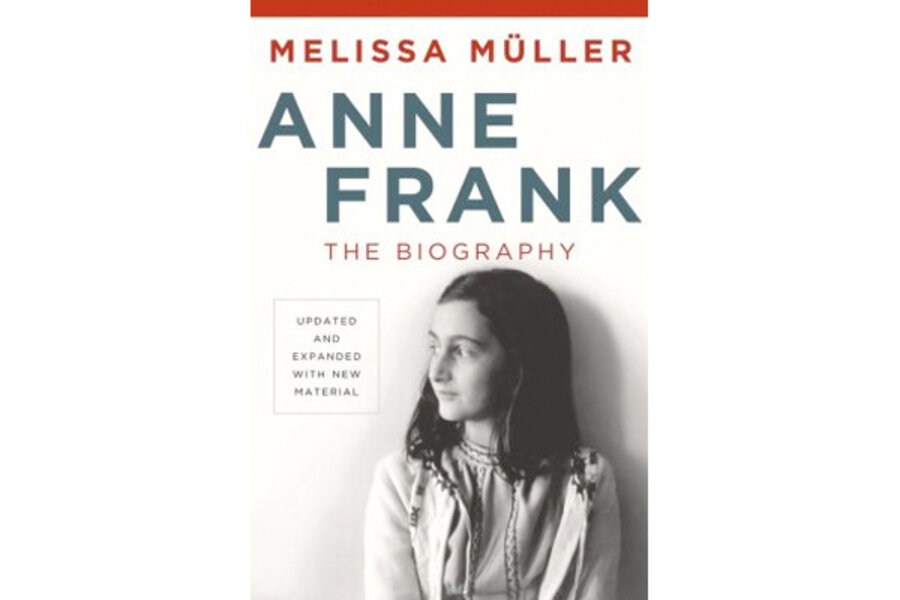Anne Frank: The Biography
In Teju Cole’s "Open City," a Moroccan character named Khalil claims that Europe lacks freedom because “[i]f you say anything about Israel, you have your mouth plugged with the six million.” He is, of course, referring to the six million Jewish victims of the Holocaust.
The beauty and value of Anne Frank’s diary, and the life-story that emerged from its publication, lies in the way it transforms that statistic into an individual life of artistic and intellectual promise. When I first read the diary as an adolescent, Anne’s voice resonated: we shared a birthday and Jewish heritage, and I related to her crushes, rebellions and ambitions.
Initially I worried that revisiting that narrative might be superfluous and even (I’ll admit it) potentially dry. Yet Melissa Müller’s updated version of Anne Frank: The Biography is anything but.
In her comprehensive and nuanced portrait of Anne and her collapsing world, Müller has given us Anne Frank for adults. Whether describing the dynamics of Otto and Edith Frank’s marriage, assessing the leaks that may have lead to the family’s discovery (some of this is new material), or sketching a picture of Anne’s world in the Annex and then, hauntingly, the camps, Müller’s work is flawlessly researched and compellingly written.
While offering a portrait of Anne – her growth as a writer, family, and relationships with friends and boyfriends (“Hello” Silberberg’s story is especially interesting) – Müller also details Hitler’s rise to power and its dire consequences for the Jewish people of Europe. To follow the inexorable movement from the Nuremberg Laws to the 1938 pogroms to the Dutch Jewish Council’s compliance in rounding up victims for the camps is to be given a radical lesson in the material consequences of apathy and fear.
American audiences, who tend to cast themselves as heroes in World War II, might note our strategy “to delay and effectively stop for a temporary period of indefinite length the number of immigrants into the United States,” as undersecretary of state Breckenridge Long put it. It was these practices that successfully kept the Franks in Holland, where all but Otto would be sent to their deaths at Auschwitz and Bergen-Belsen.
Müller subtly contrasts the tentativeness of Nathan Straus, the powerful New York businessman and Otto’s longtime friend, who would only support his immigration through “established channels,” with the “helpers,” Miep Gies, Johannes Kleiman, Elisabeth “Bep” Voskuijl, and Victor Kugler, gentiles who went from working for Otto to supplying his family with provisions at great personal risk during their two years in hiding.
The diary itself takes on a life of its own. Müller’s discovery of a new five-page entry in the 1990s, when her biography was originally published, caused enough of a stir to make the front page of The New York Times. These pages – initially suppressed by Otto, who excluded them from the diary but gave them to a friend for safe-keeping – shed a different light on Edith through Anne’s maturing understanding of her parents’ marriage, which Müller expands on through her research.
The diary itself is shown not as a simple window into the Annex but as the carefully constructed project of an aspiring writer, one who was inspired by a radio broadcast out of London calling for eyewitness accounts, diaries and letters especially, to be collected after the war.
Anne thus planned the diary as a basis for her first book, and it is only by remembering that this ambition was realized that the tragedy of her death is in small part mitigated. She was on the last train from Westerbork, a Dutch internment camp that was relatively habitable (relatively being the operative word here), to Auschwitz, where she and her sister were then transported to Bergen-Belsen.
Be forewarned that the penultimate chapter, “The Last Train,” is a painful read.
Throughout the biography, Müller establishes the unifying theme of Nazism as the relentless attempt to rob every Jewish person of individuality, epitomized by the edict that Dutch Jews register for “voluntary emigration” but substitute “Sarah” and “Israel” for each family member’s first name.
In a similar vein, Miep Gies warns again casting Anne as a symbol for the six million, insisting she instead serve as a reminder of the individuality of each life lost. In an age of political apathy, when genocides have become all too common and prominent figures like the artist Charles Krafft emerge as Holocaust deniers, revisiting Anne Frank’s life thus becomes more important than ever.
Elizabeth Toohey is a Monitor contributor.






